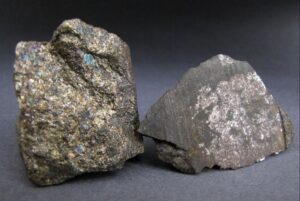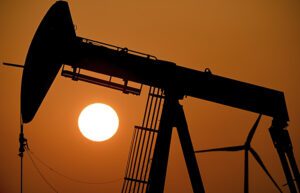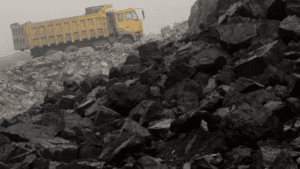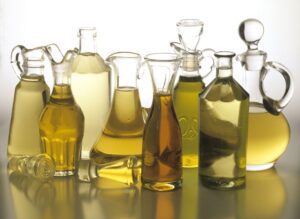
Ukraine in January-July this year reduced imports of nickel ores and concentrate in physical terms by 57% compared to the same period last year – up to 309.699 thousand tons.
According to statistics released by the State Customs Service (STS), in monetary terms, imports of nickel ores decreased by 58.3% to $14.112 million.
At the same time, the import was carried out from Guatemala (100% of deliveries in terms of money).
For seven months of 2022, as in January-July 2021, Ukraine did not export and re-export these products.
As reported, Ukraine in 2021 reduced the import of nickel ores and concentrate in physical terms by 20.6% compared to 2020 – to 1 million 235.533 thousand tons. In monetary terms, imports of nickel ores decreased by 22.2% to $58.929 million. Imports were carried out from Guatemala (100% of deliveries in monetary terms).
Last year, Ukraine did not export and re-export these products.
Nickel ore is imported to Ukraine by the Pobuzhsky ferronickel plant (PFC, part of the Solway group).
PFC processes about 1.2 million tons of ore per year.

In January-July 2022, Ukraine reduced the import of oil and crude oil (according to the TNVED code 2709) by 16.4% (by 101,209 thousand tons) compared to the same period last year, to 516,807 tons.
According to the State Customs Service, raw materials worth $346.377 million were imported in seven months, which is 1.7 times more than in January-July 2021 ($267.354 million), incl. from Azerbaijan – by $346.195 million, Libya – by $0.182 million. In July of this year, Ukraine did not import oil.
Ukraine in January-July 2022 did not export oil, while for the same period in 2021, 89.963 thousand tons of oil were exported from the country to Romania for $27.133 million.
As reported, in 2011 Ukraine imported 5 million 826.316 thousand tons of oil for $4 billion 384.387 million, in 2012 – 1 million 544.196 thousand tons for $1 billion 232.584 million, in 2013 – 761.058 thousand tons for $630.282 million, in 2014 – 178.613 thousand tons for $146.533 million, in 2015 – 248.158 thousand tons for $89.039 million, in 2016 – 515.954 thousand tons for $173.835 million, in 2017 – 1 million 13.359 thousand tons of oil for $442.219 million, in 2018 – 766.832 thousand. tons for $431.735 million, in 2019 – 790.628 thousand tons for $405.748 million, in 2020 – 1 million 245.587 thousand tons for $409.167 million, in 2021 – 1 million 561.247 thousand tons for $827.592 million.

In January-July 2022, Ukraine imported 3 million 933.911 thousand tons of oil products (according to the TNVED code 2710: gasoline, diesel fuel, fuel oil, jet fuel, etc.), which is 13.2% less than in the same period last year (4 million 531.367 thousand tons).
According to the State Customs Service, oil products were imported in the amount of $4 billion 324.218 million, which is 67.7% more than in January-July 2021 ($2 billion 578.915 million).
Belarus imported fuel for $793.511 million (share – 18.35%), Russia – for $590.393 million (13.65%), India – for $451.414 million (10.44%), other countries – for $2 billion 488.901 million (57 .56%). For seven months of 2021, the total cost share of fuel from Belarus and the Russian Federation in imports was 67%.
In addition, Ukraine exported 46.157 thousand tons (-79.4% compared to January-July-2021) of oil products for a total of $48.255 million (-58.5%) in seven months. The cost of fuel delivered to contractors from Lithuania amounted to $16.342 million, Estonia – $6.022 million, Hungary – $3.606 million, other countries – $22.285 million.
As reported, Ukraine imported 8 million 790.515 thousand tons of oil products in 2021, which is 9.6% more than in 2020 (8 million 23.072 thousand tons).
Oil products were imported in the amount of $5 billion 614.787 million, which is 65.3% more than in 2020 ($3 billion 396.929 million). Incl. Belarus imported fuel for $2 billion 351.116 million (share – 41.87%), Russia – for $1 billion 240.513 million (22.09%), Lithuania – for $654.584 million (11.66%), other countries – for $1 billion 368.574 million (24.37%).

In January-July 2022, Ukraine reduced the import of hard coal and anthracite (HS code 2701) by 2.7 times (by 7 million 367.3 thousand tons) compared to the same period in 2021 – to 4 million 308, 5 thousand tons.
According to the State Customs Service, coal was imported for $1 billion 27.466 million, which is 11.5% less than in January-July 2021 ($1 billion 160.575 million).
Coal came from the Russian Federation for $420.589 million (share in imports 40.92%), the USA – for $277.972 million (27.05%), Australia – for $100.235 million (9.76%), other countries – for $228.67 million ( 22.26%).
Export of coal by Ukraine for seven months of 2022 amounted to 450.6 thousand tons for $145.917 million, incl. to Slovakia – by $93.349 million, Poland – by $34.084 million, Hungary – by $15.919 million, other countries – by $2.565 million. In January-July 2021, exports amounted to 0.2 thousand tons for $0.025 million.
As reported, Ukraine in 2021 increased the import of hard coal and anthracite by 15.4% (by 2 million 612.018 thousand tons) compared to 2020 – up to 19 million 563.048 thousand tons.
Coal was imported for $2 billion 488.696 million, which is 47.2% more than in 2020 ($1 billion 690.541 million). Coal came from the Russian Federation for $1 billion 545.208 million, the USA for $494.636 million, Kazakhstan for $253.469 million, and other countries for $195.383 million.
Geographical structure of total imports of goods and services in 2021 (USD thousand)


India, the world’s largest importer of edible vegetable oils, expects to receive the first batches of sunflower oil from Ukraine from September after a five-month break caused by the Russian invasion and the blockade of Ukrainian seaports.
According to Bloomberg’s website, citing Indian agricultural trader Sandip Bajoria, India may receive 50-60 thousand tons of sunflower oil in September, as Ukraine is going to open some corridors of the Black Sea for the export of agricultural products from the ports of Odessa and Chernomorsk.
“We have begun to receive offers for August deliveries, but everything will depend on the availability of ships. Ukraine has sufficient reserves of oilseeds for processing,” the trader is quoted as saying.
Sunflower oil imports to India from Ukraine have been suspended since April as the Russian invasion disrupted the country’s trade, he said.
“The Indian government’s decision to allow duty-free imports of 2 million tons of sunflower oil annually this fiscal year and next will support demand. India purchased 1.89 million tons of crude sunflower oil in the year ending October, with Ukraine supplying almost 74%, and Argentina and Russia – about 12%,” the publication clarified in the message.
As reported with reference to the Deputy Minister of Economy – Trade Representative of Ukraine Taras Kachka, in the 2021/2022 marketing year (MY, July-June), the country exported 61.52 million tons of grain and oilseeds worth $22.2 billion.
During this period, foreign markets were supplied, including 4.3 million tons of sunflower oil worth $5.8 billion, 3.4 million tons of sunflower meal worth $960 million, 421 thousand tons of soybean meal worth $230 million, 1.1 million tons of soybeans for $641 million, 2.7 million tons of rapeseed for $1.7 billion and 1.09 million tons of sunflower for $616 million.